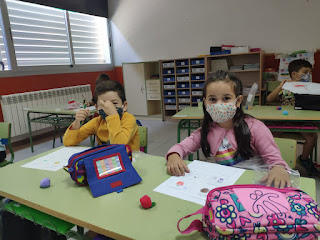HEALTHY HABITS FOR OUR MUSCULOSKELETAL SYSTEMS.
We need to keep our musculoskeletal systems in good
condition so they can support our bodies and help us to move. To do this we
need to develop healthy habits.
Doing regular physical exercise, having a healthy diet,
lifting things carefully and sitting correctly, and getting sufficient sleep
are healthy habits.
-
Doing some exercise kind of sport helps to make
our muscles strong and keep them in good condition. But excessive exercise and
hard knocks can cause injuries to your musculoskeletal system.
-
It is very important to adopt the correct
posture when we sit down, pick objects up off the floor, walk or do any
activity.
-
It is important to have a healthy diet to give
our bodies the necessary nutrients and energy to carry our our daily
activities. Remember the pyramid food.
-
We also need to sleep about 10 hours every day
so that our musculoskeletal systems can rest.
HÁBITOS PARA CUIDAR EL APARATO LOCOMOTOR
El aparato locomotor sostiene nuestro cuerpo y nos permite
movernos; por ello para mantenerlo sano debemos seguir unos hábitos saludables.
Hacer ejercicio físico, tener una alimentación sana, evitar
posturas incorrectas y descansar lo suficiente son hábitos saludables.
-
Practicar algún deporte ayuda a fortalecer y a
mantener en buen estado los músculos. Pero debes evitar los ejercicios
violentos, los golpes bruscos y las tensiones excesivas, ya que pueden producir
lesiones.
-
Adoptar una postura correcta al sentarse, al
caminar o durante cualquier actividad que realicemos durante el día, es muy
importante.
-
También es necesario alimentarse de una forma
adecuada para asegurarnos la energía y los nutrientes necesarios para realizar
todas las actividades diarias. Recuerda la pirámide alimenticia.
-
También es necesario dormir un número suficiente
de horas diarias (unas 10 horas) para que todo nuestro aparato locomotor
descanse.
ACTIVIDAD: Enviarme fotos con hábitos saludables y no saludables relacionados con la lectura.


















































